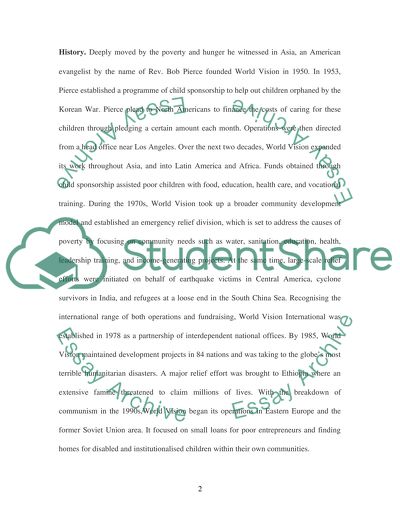Cite this document
(World Vision International Report Example | Topics and Well Written Essays - 2000 words, n.d.)
World Vision International Report Example | Topics and Well Written Essays - 2000 words. https://studentshare.org/religion-and-theology/1518937-world-vision-international-a-vision-by-one-a-vision-for-all
World Vision International Report Example | Topics and Well Written Essays - 2000 words. https://studentshare.org/religion-and-theology/1518937-world-vision-international-a-vision-by-one-a-vision-for-all
(World Vision International Report Example | Topics and Well Written Essays - 2000 Words)
World Vision International Report Example | Topics and Well Written Essays - 2000 Words. https://studentshare.org/religion-and-theology/1518937-world-vision-international-a-vision-by-one-a-vision-for-all.
World Vision International Report Example | Topics and Well Written Essays - 2000 Words. https://studentshare.org/religion-and-theology/1518937-world-vision-international-a-vision-by-one-a-vision-for-all.
“World Vision International Report Example | Topics and Well Written Essays - 2000 Words”. https://studentshare.org/religion-and-theology/1518937-world-vision-international-a-vision-by-one-a-vision-for-all.


